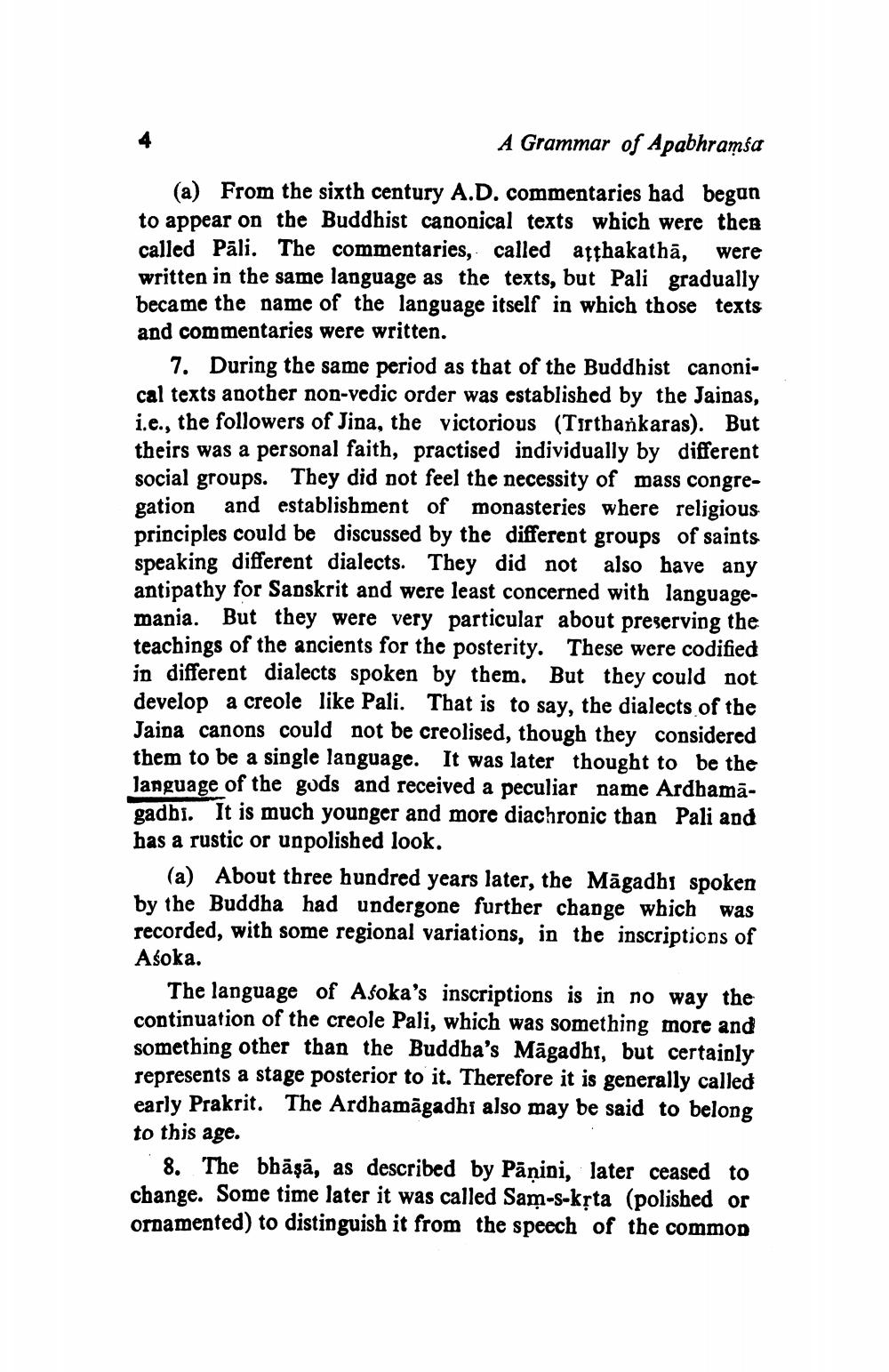________________
A Grammar of Apabhramsa
(a) From the sixth century A.D. commentaries had begun to appear on the Buddhist canonical texts which were then called Pāli. The commentaries, called açthakathā, were written in the same language as the texts, but Pali gradually became the name of the language itself in which those texts and commentaries were written.
7. During the same period as that of the Buddhist canonical texts another non-vedic order was established by the Jainas, i.e., the followers of Jina, the victorious (Tirthankaras). But theirs was a personal faith, practised individually by different social groups. They did not feel the necessity of mass congregation and establishment of monasteries where religious principles could be discussed by the different groups of saints speaking different dialects. They did not also have any antipathy for Sanskrit and were least concerned with languagemania. But they were very particular about preserving the teachings of the ancients for the posterity. These were codified in different dialects spoken by them. But they could not develop a creole like Pali. That is to say, the dialects of the Jaipa canons could not be creolised, though they considered them to be a single language. It was later thought to be the language of the gods and received a peculiar name Ardhamagadbi. It is much younger and more diachronic than Pali and has a rustic or unpolished look.
(a) About three hundred years later, the Māgadbı spoken by the Buddha had undergone further change which was recorded, with some regional variations, in the inscriptions of Asoka.
The language of Asoka's inscriptions is in no way the continuation of the creole Pali, which was something more and something other than the Buddha's Māgadhi, but certainly represents a stage posterior to it. Therefore it is generally called early Prakrit. The Ardhamāgadhi also may be said to belong to this age.
8. The bhāṣā, as described by Pāṇini, later ceased to change. Some time later it was called Sam-s-kệta (polished or ornamented) to distinguish it from the speech of the common




